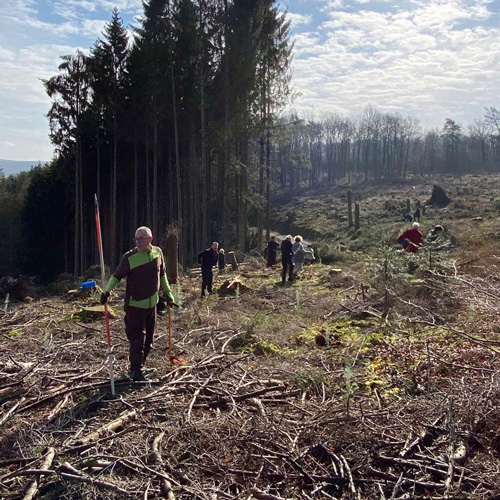Completely neutral
Energy use
Internally produced electricity
Status: 2019
Certified environmental and energy management
Saving energy and thus protecting the planet: BPW is clearly committed to protecting the environment and the careful use of resources and energy in all its business activities. BPW’s environmental and energy policy is regarded as an important, obligatory task of corporate management and is continuously improved. BPW sets itself corresponding targets and strives to achieve them on a binding basis. Selected products and services are used to continuously improve energy efficiency and reduce environmental pollution. A very important part of these activities is the implementation and further development of a certified environmental and energy management system in accordance with internationally recognised standards such as ISO 14001 and ISO 50001.
Electrical vehicle fleet
Truck fleet
2017
- Diesel 89%
- Electric 11%
2018
- Diesel 78%
- Electric 22%
2019
- Diesel 78%
- Electric 22%
Car fleet
2017
- Diesel/Petrol 85%
- Electric/Hybrid 15%
2018
- Diesel/Petrol 83%
- Electric/Hybrid 17%
2019
- Diesel/Petrol 78%
- Electric/Hybrid 22%
Highly efficient new building
Among other things, the new building will be equipped with a geothermal system that will reduce the building’s CO2 emissions by more than 90 percent. In concrete figures, this means: Compared to a building of this size powered by fossil fuels, the building emits around 62,000 kilograms less CO2 for heating and cooling the offices and 119,000 kilograms less for cooling the IT servers. This is a total reduction of 181,000 kilograms of CO2 per year. The heat pump, which is used for heating in winter, is powered by electricity from renewable sources. BPW relies exclusively on 100 percent green electricity with a certificate of origin, which is to be produced in part by the photovoltaic system on the roof of the new building itself.
Reduce waste – increase recycling
2017
%
Tonnes
1,170 t non-hazardous waste
480 t hazardous waste
2018
%
Tonnes
2,437 t non-hazardous waste
569 t hazardous waste
2019
%
Tonnes
1,251 t non-hazardous waste
703 t hazardous waste
Preserve a valuable element
In the past two years, the overall use of water has been significantly reduced: This is mainly due to the necessary refurbishment and shutdown of the hydroelectric turbine at the Wiehl plant.
Water consumption in cubic meters
2017
- 100%
2018
- 58.12%
2019
- 2%
Much less paper
One year ago motionist.com successfully replaced the printed BPW customer magazine. Due to the conversion BPW saves more than 1 million sheets of paper per year. The sustainability report has also been published exclusively online since 2019. Thus another 67,000 sheets could remain unused. By converting to a digital accounting system in the company, BPW is also reducing the volume of paper in the company by 36,000 sheets of paper and more than 19,000 envelopes.
Of course, digitalisation also means increased energy consumption, which is why BPW decided several years ago to use only green electricity with a certified proof of origin.
To the website





